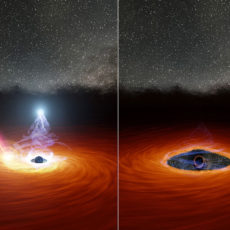
The closest black hole to Earth has been discovered by astronomers using the Gemini North telescope, one of the twin telescopes operated by NSF’s NOIRLab. It’s located 1,600 light-years away in the constellation Ophiuchs, making the black hole three times closer to Earth than the previously observed X-ray binary.
Supermassive black holes of these immensely dense objects most certainly reside at the centers of all large galaxies, while stellar-mass black holes, which weigh in at approximately 5-100 times the mass of the Sun, are far more common, with an estimated 100 million in the Milky Way alone. However, just a handful have been confirmed to date, but nearly all of these are ‘active’, as in they shine brightly in X-rays as they consume material from a nearby stellar companion.
- Bring to life the rocket launch that took humans to the moon with the meter-high (approximately 1: 110 scale) model rocket of the NASA Apollo Saturn V
- The Saturn V rocket kit includes 3 removable rocket stages (first, s-ii second, and s-ivb third) below the launch escape system, command and service...
- After building the Saturn V rocket, you can display the spacecraft horizontally with 3 stands; The Lunar Lander docks with the command and service...
Our Gemini follow-up observations confirmed beyond reasonable doubt that the binary contains a normal star and at least one dormant black hole. We could find no plausible astrophysical scenario that can explain the observed orbit of the system that doesn’t involve at least one black hole. When we had the first indications that the system contained a black hole, we only had one week before the two objects were at the closest separation in their orbits. Measurements at this point are essential to make accurate mass estimates in a binary system,” said Kareem El-Badry, an astrophysicist at the Center for Astrophysics.







